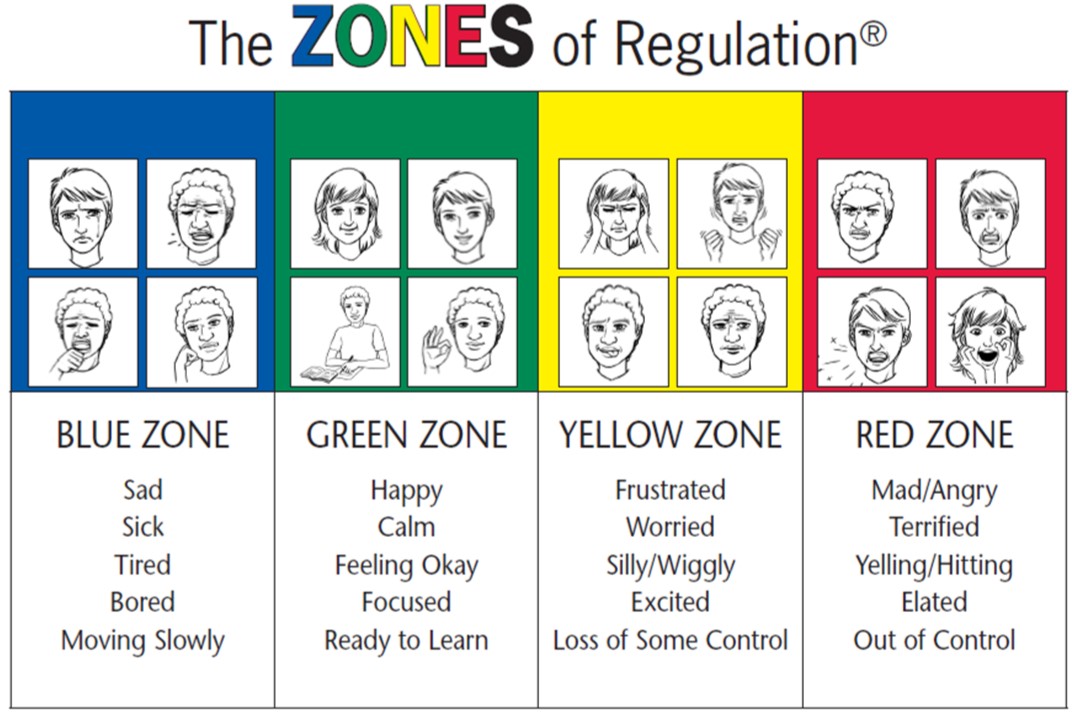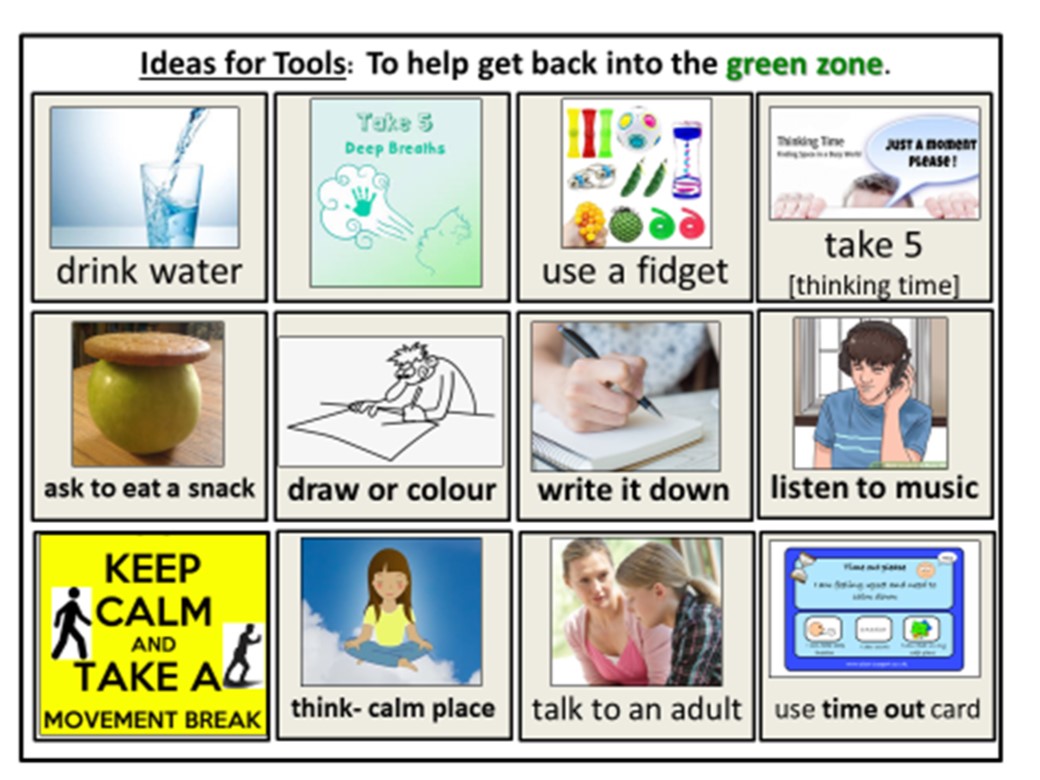Help for the Holidays - Zones of Regulation
Help for the Holidays – Zones of Regulation
REMINDER: Understanding and use of the Zones of Regulation is something we are continuing to develop across the school this year and is a key element of the SCERTS programme [Social Communication, Emotional Regulation and Transactional Supports] that has been running as a borough-wide initiative. The Zones of Regulation is a programme geared towards helping students gain skills in consciously regulating their actions, which in turn leads to increased control and problem solving abilities. Students are supported to gain skills recognising when they are in different states called ‘zones’ and also learn how to use strategies or tools to stay in a zone or move from one to another.
The aim is for students to gain skills recognising and managing their emotions more effectively as well as develop a wider perspective about how others see and react to their behaviour. We will be running some workshops for parents in the Spring term however if you would like to find out more please go to https://zonesofregulation.com/index.html
Our students are now becoming very good at identifying the zone they are in. The holiday period can be a very exciting with a lot of change in routine, you might find that the zones chart below is a very helpful strategy to use. I have included some ideas for ‘tools’ that your child can discuss with you. It is better if you talk about what ‘tools’ work well in the different zones in advance, this will allow you to calmly prompt your child towards the right strategy if needed.
Remember:
NO zone is linked to bad behaviour, the zones are how a person is feeling. It is normal for us all to move between the zones as part of our day. The Green Zone is the most comfortable to be in, Red Zone does not feel good. It is important to be able to acknowledge that we are in this zone without blame and then take positive steps to calm. When your child is in the Red Zone language should be kept to a minimum; giving a child space to process and implement strategies is what we are looking to do. Tell your child you are proud of them for using the zones so well before beginning to discuss what caused the upset. It is worth remembering that the clearest thinking and communication happens in the Green Zone and so it makes sense to wait until this is achieved.
DO prompt your child to express the zone they feel they are in either by saying the name of the zone or pointing to the chart.
DO NOT tell your child what zone they are in – instead make an observation, ‘I think you are in ... what do you think? THEN prompt with the agreed ‘tool’.
Trickier but a good skills to build: Encourage your family and friends to use the ‘zones’ to explain how they are feeling to your child. If you are in ‘yellow zone’ your child can understand that they will need to wait 5 minutes until you are in the ‘green zone’ when you will be able to listen properly to what they want to say. Some families find using a timer helpful for this if your child struggles with the concept of time.
I hope that this helps and wish you all a wonderful end to the year and start to 2020! Anne Sugden
English & Communication Faculty Leader


